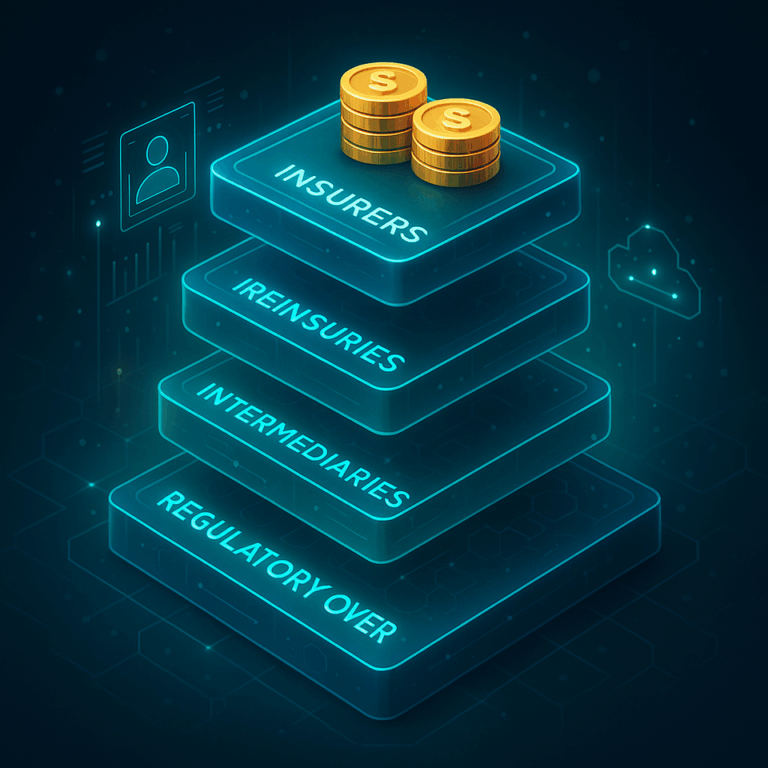In 2025, the global insurance industry is experiencing one of the most profound transformations in its history. Traditional models that relied on manual underwriting, paper-based claims, and static policies are rapidly giving way to a data-driven, technology-enhanced ecosystem.
Artificial intelligence, big data, and automation are now at the heart of insurance operations, enabling companies to offer personalized products, predict risks with greater precision, and process claims in record time. This technological evolution is not only improving efficiency but also redefining how individuals and businesses understand protection.
The future of insurance lies in customization, transparency, and proactive risk prevention.
Key Technological Innovations Driving Change
Artificial Intelligence and Predictive Analytics
AI has become a cornerstone of modern insurance. By analyzing massive datasets—from driving behavior to health metrics—insurers can more accurately assess risk and tailor coverage to individual needs.
Predictive analytics allows for early detection of potential losses, helping insurers prevent claims rather than just respond to them. In 2025, machine learning algorithms evaluate millions of variables, from climate data to financial trends, allowing for real-time premium adjustments and more equitable pricing.
Blockchain and Smart Contracts
Blockchain technology has introduced new levels of trust and transparency. Policies and claims can be stored securely on decentralized ledgers, ensuring accuracy and reducing fraud.
Smart contracts automate claim settlements—triggering instant payments once pre-defined conditions are met. For example, flight delay insurance can now process reimbursements automatically using verified flight data, eliminating manual intervention.
The Internet of Things (IoT)
Connected devices have redefined how insurers monitor and manage risks. Wearable health trackers, vehicle sensors, and smart home systems provide continuous real-time data that influences coverage and pricing.
Home insurance premiums, for instance, can decrease for policyholders who use smoke detectors, smart locks, and leak sensors. Similarly, auto insurance is becoming usage-based, rewarding safe driving behaviors recorded by telematics devices.
The IoT era has shifted the focus from reactive claims to preventive protection—empowering consumers while helping insurers manage risk more sustainably.
Automation and Digital Claims Management
One of the most customer-facing improvements in 2025 is the automation of claims. Advanced chatbots, document recognition software, and automated verification systems enable faster responses, fewer errors, and greater customer satisfaction.
What once took weeks can now be resolved in minutes. This automation allows insurers to redirect human expertise to more complex cases, improving both speed and service quality.
The Rise of Personalized and On-Demand Insurance
Modern consumers expect flexibility and control, and insurance companies are adapting accordingly.
On-demand insurance models allow customers to activate or pause coverage instantly through mobile apps. Whether insuring a car for a single trip or covering a drone for a day’s use, this adaptability fits the lifestyle of today’s digital consumers.
Personalization has also become central. Insurers now use behavioral analytics and AI to design policies that reflect individual risk profiles, life stages, and financial goals. A young professional, for instance, may receive a customized mix of health, cyber, and travel insurance tailored to their digital lifestyle.
This personalized approach strengthens trust, reduces unnecessary coverage costs, and enhances overall customer engagement.
The Expansion of Cyber Insurance
In 2025, cyber threats remain one of the greatest challenges to global stability. As digital dependency grows, so does the need for protection against data breaches, ransomware, and identity theft.
Cyber insurance has evolved from a niche product to a mainstream necessity for businesses and individuals alike. Modern policies now cover financial loss, data restoration, and even reputation management following a cyberattack.
Insurers are also integrating real-time cybersecurity monitoring into their offerings—using predictive tools to identify vulnerabilities before an incident occurs. This proactive model marks a significant shift from traditional loss recovery to digital resilience.
The Integration of ESG and Ethical Insurance Practices
Sustainability and ethics are reshaping how insurers operate. Environmental, Social, and Governance (ESG) factors are now embedded in underwriting, investment, and policy design.
Insurers are rewarding policyholders who make eco-friendly choices, such as driving electric vehicles, installing renewable energy systems, or adopting low-carbon business practices. Investments made by insurance firms increasingly target sustainable projects, aligning profitability with social responsibility.
This movement reflects a broader trend across finance—using insurance not just as a safety net, but as a catalyst for positive global impact.
Challenges Facing the Industry
Despite rapid progress, the insurance industry faces complex challenges in 2025:
-
Data Privacy and Security: With greater data collection comes heightened responsibility to protect consumer information. Regulators are enforcing stricter compliance to ensure transparency and consent.
-
Regulatory Fragmentation: Different jurisdictions continue to evolve at varying speeds, creating inconsistencies in digital insurance regulation.
-
Technology Dependence: Overreliance on algorithms can create ethical and operational risks if AI systems are not properly monitored.
-
Economic Uncertainty: Inflation and market volatility affect reinsurance costs, premium pricing, and profitability margins.
To thrive, insurers must balance innovation with ethical governance and risk management discipline.
The Role of Human Expertise in a Digital Industry
While automation is reshaping the industry, human expertise remains irreplaceable. Advisors, underwriters, and claims specialists provide empathy, judgment, and ethical oversight that algorithms cannot replicate.
The future of insurance depends on collaboration between human insight and machine intelligence. Hybrid models—where AI handles routine tasks while experts focus on complex decision-making—are proving most effective for ensuring fairness, compliance, and customer trust.
Global Market Outlook
The global insurance market in 2025 continues to expand, driven by population growth, digital adoption, and increasing awareness of financial protection. Emerging economies in Asia, Africa, and Latin America are witnessing rapid adoption of microinsurance—low-cost, accessible coverage designed for underserved populations.
Meanwhile, established markets are refining advanced products such as parametric insurance, which provides immediate payouts based on measurable events like natural disasters.
As climate change, cyber threats, and longevity risks intensify, demand for innovative and adaptable insurance solutions will continue to grow.
Conclusions
The insurance industry in 2025 stands at the intersection of technology, data, and human purpose. What was once a conservative, paper-heavy sector has evolved into a smart, customer-centric ecosystem focused on prevention, personalization, and transparency.
Through AI, blockchain, and IoT, insurers can now predict risks before they occur, tailor policies to individual lifestyles, and settle claims instantly—all while maintaining ethical responsibility.
For consumers, this transformation means greater trust, flexibility, and empowerment. For insurers, it marks a new era of opportunity where innovation drives both profit and protection.
The future of insurance is not just digital—it is intelligent, inclusive, and human-centered.







